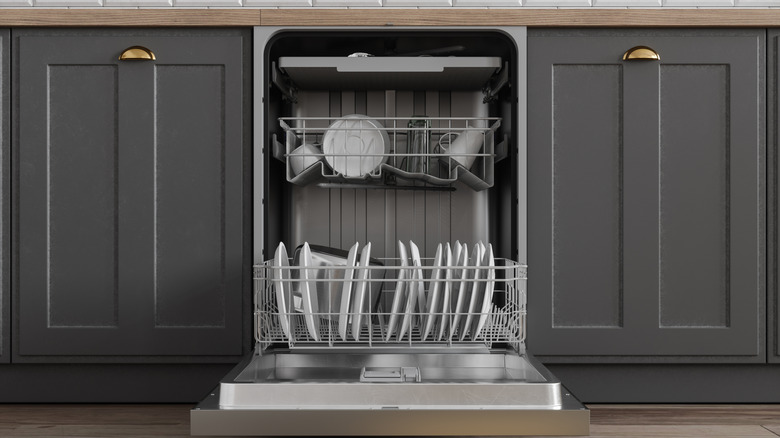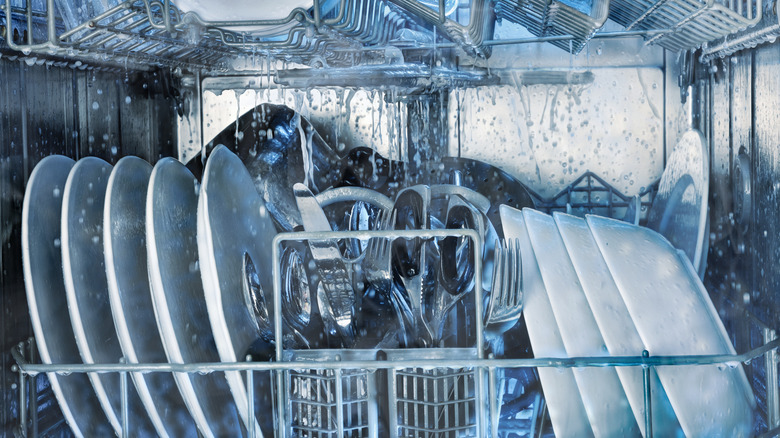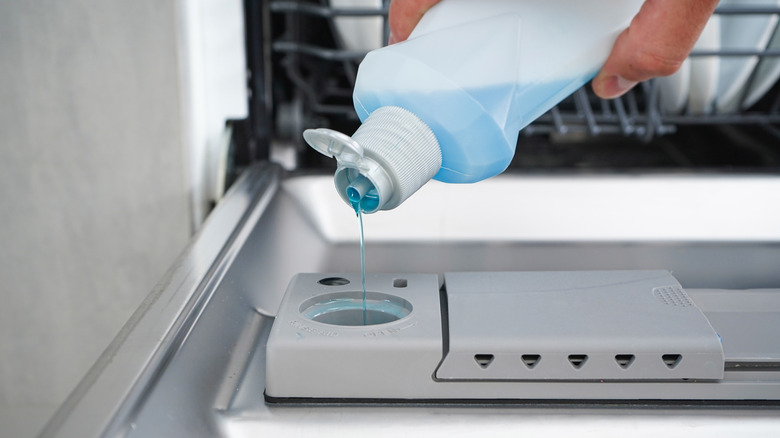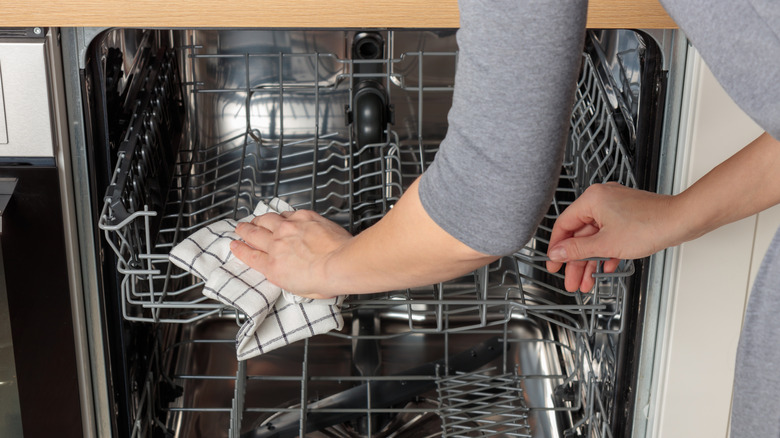Dishwasher Tips & Tricks That Dry Your Dishes Faster
For millions of households in the United States, dishwashers are the unsung heroes of the kitchen, saving you much of the time and hassle associated with hand washing dishes. However, getting the most out of your dishwasher involves taking the right steps before, during, and after a wash cycle, especially when it comes to getting drier dishes faster.
Have you ever opened your dishwasher door only to find that the dishes inside are still damp? When you're looking for a time-saving solution to dish washing, it can be frustrating to find that you'll still need to hand dry all your dishwasher-safe cookware — or leave them to sit and air dry. Fortunately, having dishes that still need to dry after a wash cycle doesn't always mean that there's a problem with your dishwasher, although that can play a role. Instead, it may just mean that you need to make a few changes, such as changing the cycle you typically wash dishes on or even how you load and unload your dishwasher.
To get you moving in the right direction, here are eight tips and tricks to help speed up the dry time on your dishes. However, if you expect that your dishwasher needs more than just a few tweaks to get your dishes dry, it can be worthwhile to consult your maintenance guide or a professional for more advanced dishwasher troubleshooting options.
Pick the right cycle for your dishes
Before you ever even load your dishwasher, achieving dry dishes fast starts with knowing what cycle to use. Many dishwashers have different settings, ranging from high to low. Most often, these are based on the size and soil level of your dishes. While this step may seem like it revolves more around how clean your dishes get rather than how dry, picking the best dishwasher cycle for your dishes can help because of the water's temperature. Picking a cycle that uses more hot water while being safe for your dishes can boost drying speed.
Load your dishwasher the right way
Once you know how cycles and water temperature can impact your dishes, you can start loading in all those dirty cups or plates piling up in your sink. However, this task actually involves some strategy if you want a better chance at dry dishes faster. Your plates and other dishes need circulation to dry, which means that you should avoid overloading your dishwasher. Chances are, your dishwasher racks have built-in holders and tines. Use these to your advantage to keep dishes from touching for better airflow during dry cycles.
Choose the right layout for certain items
While you're loading your dishwasher the right way, it's also helpful to learn how to load your dishes the right way for faster drying times. First, tableware and cookware should sit face-down in your dishwasher so that the water from the jets can clean the insides. However, this method also ensures that any condensation or water that builds up inside your bowls or cups can drip during the dry cycle. This can save you the hassle of dishes that look dry on the outside but still need a wipe down for hidden moisture.
Use your dishwasher's heat features
One of the best tips to dry your dishes faster in the dishwasher is to make sure you're using your dishwasher's heated dry feature. Not every model has this handy feature, but those that do use heat to help speed up the drying process during the wash. With some dishwashers, this can look like using hotter water when washing for increased evaporation. Other times, your dishwasher may provide the option to end each cycle with a heated dry.
Start by emptying the bottom rack
If your dishwasher isn't drying your tableware enough no matter what you do, one way to at least cut down on the time it takes to hand dry is to switch up how you're unloading your dishwasher. If you start with the cups and bowls on the top rack, any pooling water will be spilled onto the dishes below, adding to the moisture you'll need to dry. To prevent this issue, empty your bottom rack first and then work your way up instead.
Use a rinse aid while washing
Dish detergent is good for getting grime and leftover food off your plates, but it isn't the only thing you can add to your dishwashing cycle. Instead, you may have also heard of rinse aid. While normally marketed for cleaner dishes with less spots, rinse aids can also help your dishes dry faster by causing any built up moisture to run off your dishes. There's also plenty of common household alternatives to rinse aid, like white vinegar.
Open the dishwasher door after the cycle
Remember talking about air circulation above? Sometimes, if you want your dishes to dry faster, the solution is as simple as opening your dishwasher door once your wash cycle is finished. You don't need to leave it wide open in the floor, but cracking the door even just a few inches can allow some of that moisture to escape. This solution is especially helpful if you're trying to squeeze a few more uses out of an older model that may not have the same airflow as a dishwasher fresh from the store.
Place a towel in your dishwasher after the cycle
Hand drying isn't the only way that a towel can help you get dry dishes faster. Instead, after your wash cycle is done, you can place a dry, high-absorbency towel inside your dishwasher. You can place it on the top rack, or, if you want to pair it with the last hack, hang it over the top of the door so that half is inside your dishwasher. This hack works by collecting some of the leftover moisture on the towel instead of your dishes, reducing the condensation that forms after washing.








